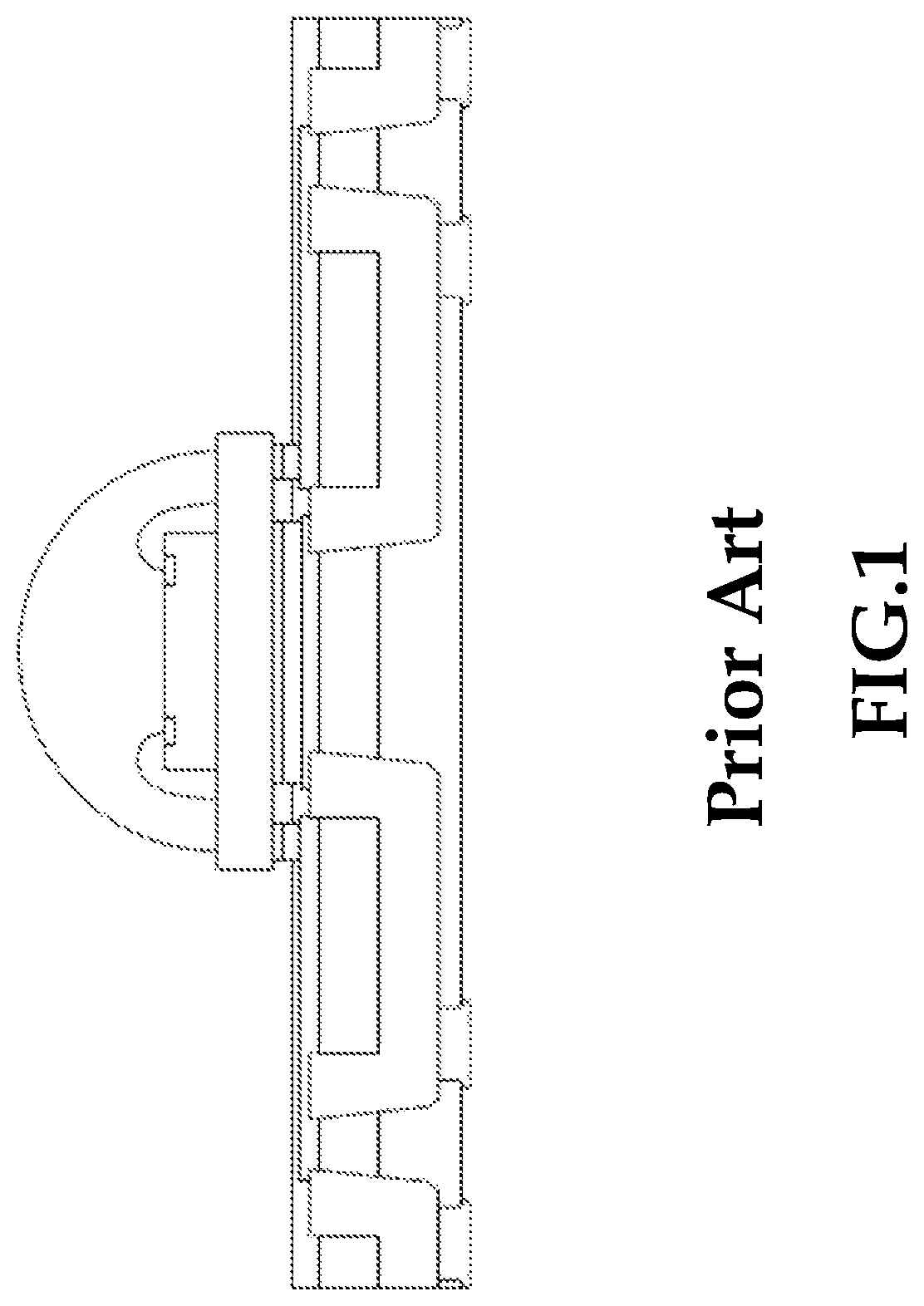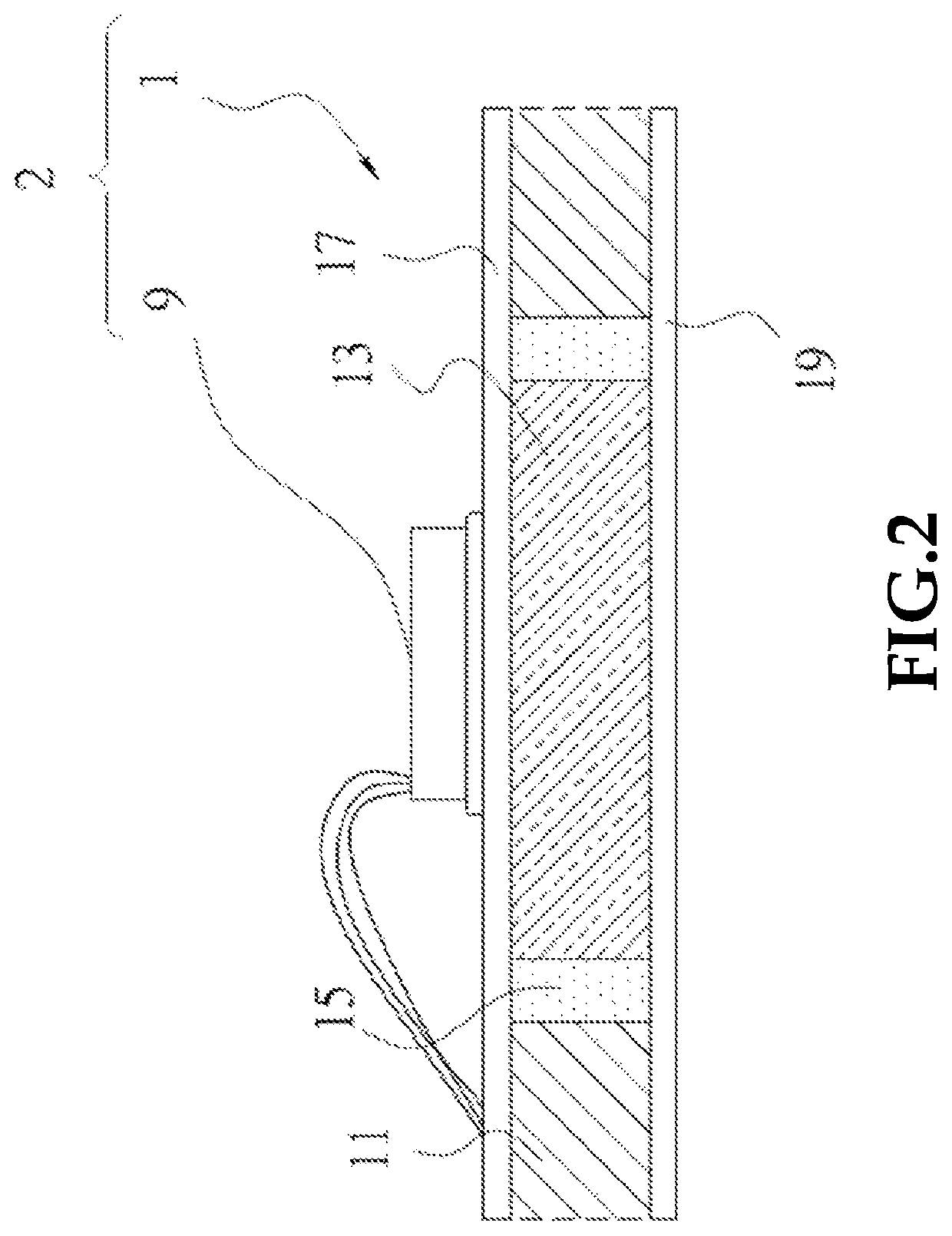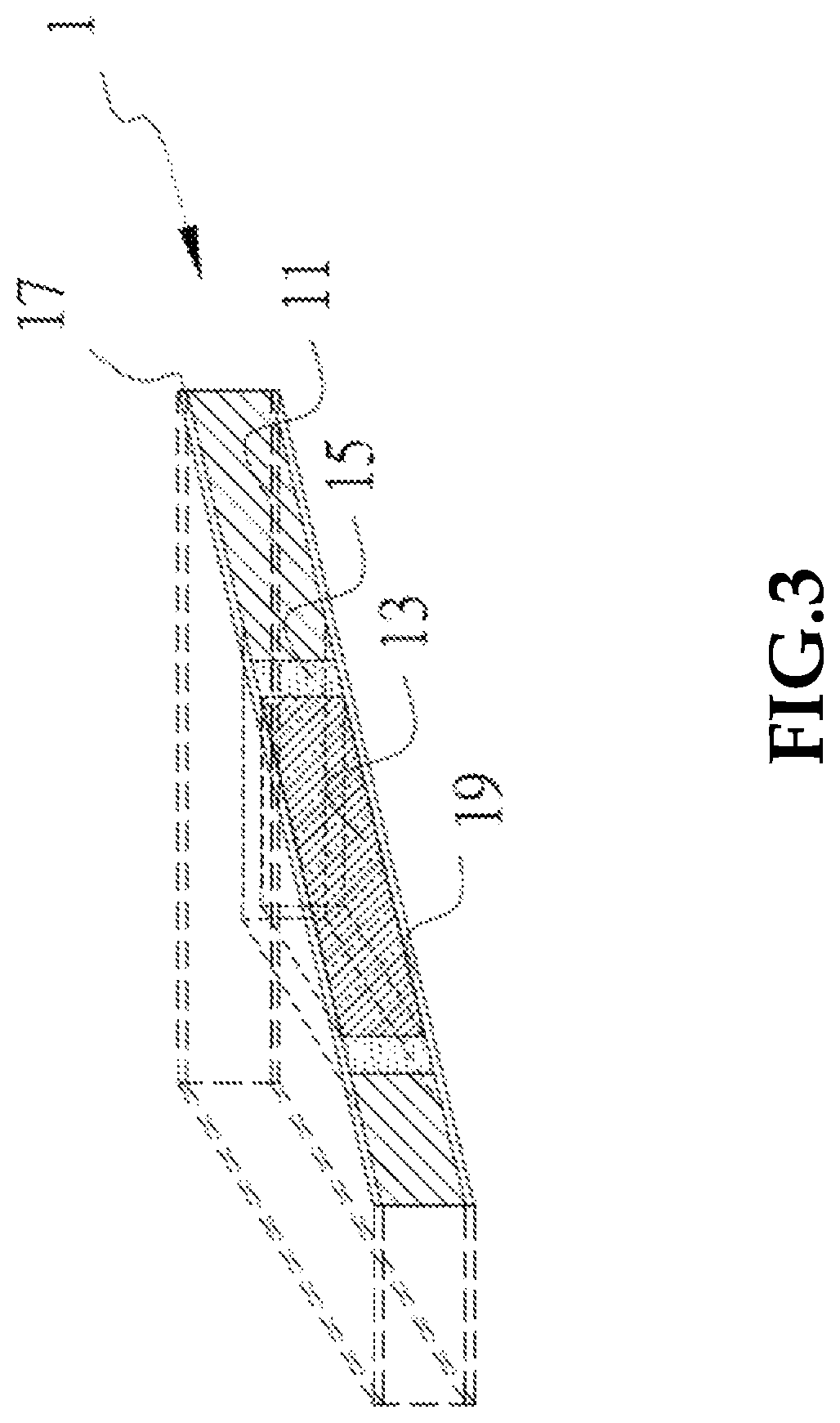Printed circuit board with built-in vertical heat dissipation ceramic block, and electrical assembly comprising the board
a technology of printed circuit boards and ceramic blocks, which is applied in the direction of fixed installation, lighting and heating apparatus, and semiconductor/solid-state device details, etc. it can solve the problems of increasing affecting the thermal conductivity prone to increase the cost of manufacturing, so as to reduce the size of the ceramic material, reduce the manufacturing cost, and improve the thermal conductivity
- Summary
- Abstract
- Description
- Claims
- Application Information
AI Technical Summary
Benefits of technology
Problems solved by technology
Method used
Image
Examples
Embodiment Construction
[0029]The foregoing and other technical contents, features and advantages of the present invention will be illustrated in detail by way of exemplary embodiments with reference to the accompanying drawings. In the exemplary embodiments, same elements will be indicated by similar numerals or labels.
[0030]Referring to FIGS. 2 through 5, a printed circuit board 1 with a built-in vertical heat dissipation ceramic block 13 and an electrical assembly 2 according to a first embodiment of the present invention is shown. The printed circuit board 1 includes a dielectric material layer 11, which can be obtained from a multi-layered FR-4 substrate (10 cm in both length and width). The dielectric material layer 11 defines a rectangular through hole 115 (2 cm in both length and width), which can be cut thorough laser technology. A cubic heat dissipation ceramic block 13, made of aluminum oxide (Al2O3), can be inserted in the through hole 115. However, those skilled in the art can easily understan...
PUM
| Property | Measurement | Unit |
|---|---|---|
| area | aaaaa | aaaaa |
| area | aaaaa | aaaaa |
| thermal conductivity | aaaaa | aaaaa |
Abstract
Description
Claims
Application Information
 Login to View More
Login to View More - R&D
- Intellectual Property
- Life Sciences
- Materials
- Tech Scout
- Unparalleled Data Quality
- Higher Quality Content
- 60% Fewer Hallucinations
Browse by: Latest US Patents, China's latest patents, Technical Efficacy Thesaurus, Application Domain, Technology Topic, Popular Technical Reports.
© 2025 PatSnap. All rights reserved.Legal|Privacy policy|Modern Slavery Act Transparency Statement|Sitemap|About US| Contact US: help@patsnap.com



